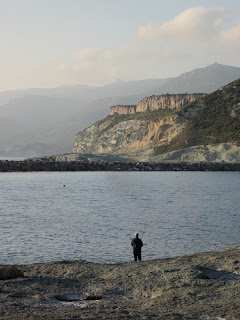Goats and sheep are a common sight in Sardegna.
Here in Masainas, with the Carboni family, I was able to experience farm life from an insider's perspective! Every morning and evening the goats (and donkey) get fed hay and last years dried artichoke remains. All of the mama goats are milked twice a day and their milk is either sold, made into cheese or consumed by the family (and lucky me!). Goat milk is thick, creamy and delicious (and actually very low in fat- not sure how?).
Sometimes, when they have over harvested artichokes, the goats get a special treat!
Coming from the US, where artichokes are a rare delicacy, you can imagine my surprise when I was told to hurl as many artichokes into the goat pen as I could possibly manage!
It was fun to watch their individual methods of attacking these spiky treats!
As with all things on a farm, nothing is wasted. All of the goats are used to produce a product of some kind- either milk, meat (baby goats are especially popular to sell at Easter time), or parts. Here is a photo of the rotisserie goat we had for lunch one day. It is goat stomach and large intestine intricately woven by hand with the small intestine. It was surprisingly tasty!


















































